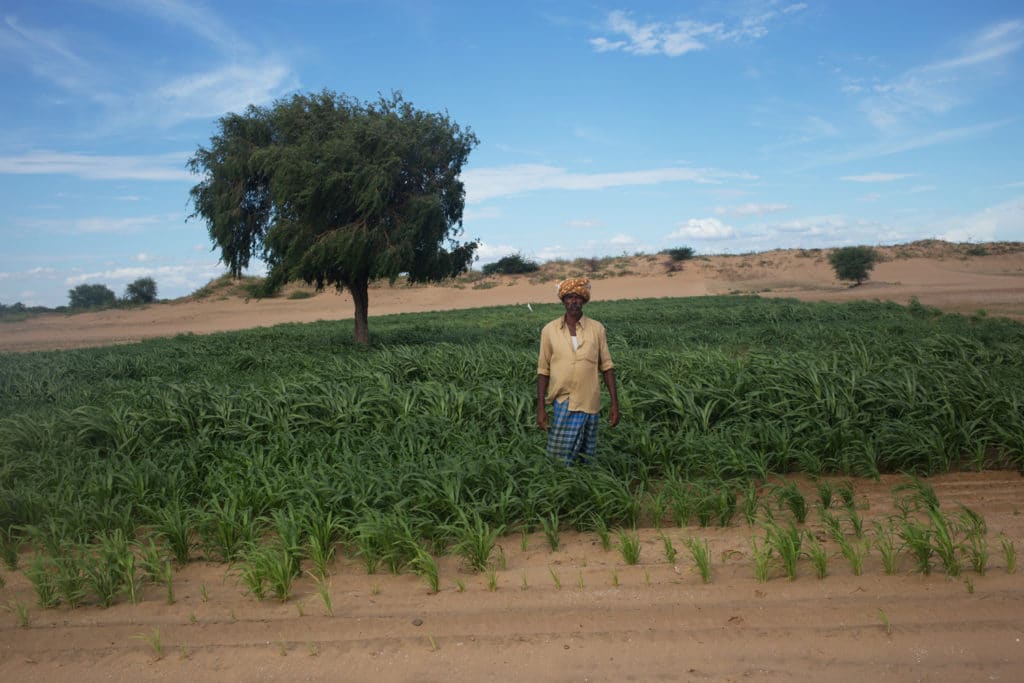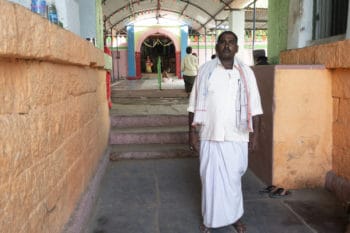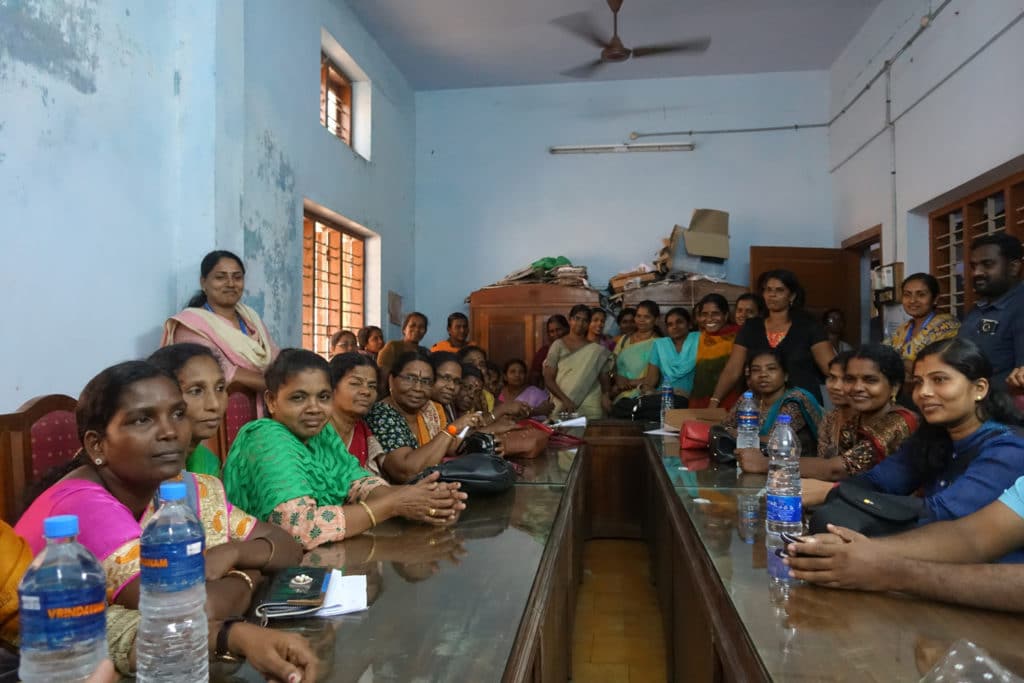The 2011 Indian Census counted 833 million human beings living in rural areas, with about 95.8 million being cultivators. Rural India, for the past decades, has been in the throes of a serious agrarian crisis—commercialisation of agriculture, domination of farming by multinational corporations, enormous debt amongst small farmers and agricultural workers, an epidemic of farm suicides, high malnutrition rates, and cascading crises amongst artisans, miners, and all rural workers who sustain farming. Since 1995, over 300,000 farmers have committed suicide and 15 million cultivators have abandoned their fields.
This crisis cannot be blamed entirely on the climate catastrophe. It has been authored by the neoliberal policy slate that has devastated the social lives of hundreds of millions of Indians. Costs of farming have risen, credit at reasonable terms has vanished, and markets for goods are predictably favourable to traders and multi-national firms. In fact, multinational firms, with their control over the global commodity chain from seed to grocery store, benefit regardless of the erratic weather and the fluctuating commodity prices. The farmers, on the other hand, suffer at each turn.
P. Sainath, Senior Fellow at Tricontinental: Institute for Social Research and Founder of the People’s Archive for Rural India (PARI), has followed this crisis from its very beginning. It was his reporting that revealed the calculated corruption that contorted India’s rural development projects for his award-winning book Everybody Loves a Good Drought (1995). With a team of rural journalists, P. Sainath revealed the terrible chain of farm suicides, covered up by the government and by the old prejudice of familial shame. In recent years, Sainath has been writing about the immensity of the agrarian crisis and the tentacles of finance into the countryside. For Dossier #21, we share two of his stories. The first story is about the harsh impact of the changing climate on top of an already battered rural economy. Sainath takes us to Andhra Pradesh’s Rayalaseema region, where he encounters farmers growing for seed companies in the most adverse conditions. The second story takes us to Kerala, where we find the Kudumbashree women’s cooperative, which has resiliently resisted the devastation of the worst floods in the state in the last ninety-four years (which we covered in Dossier #9: How Kerala Fought the Heaviest Deluge in Nearly a Century). Sainath not only documents the ugly side of history; he is keen as well to detect the initiatives that breathe life into a future for the planet.
Sainath offers a quick three-point programme to reverse the agrarian calamity:
- Farming must be agro-ecological in its approach, which means in its choice of location for farming and its choice of crop. Coffee should not be grown in Alaska, and sugarcane must not be grown in Marathwada. Native crops must be harnessed and cultivated. Concern must be paid to perennial crops and those that require only organic pesticides and fertiliser.
- Farming must be de-industrialised from the heavy use of toxic chemicals and the use of dangerously mechanised seeds.
- Land reform is essential, particularly land reform that creates cooperatives and collectives. Farming belongs to communities, not to corporations.
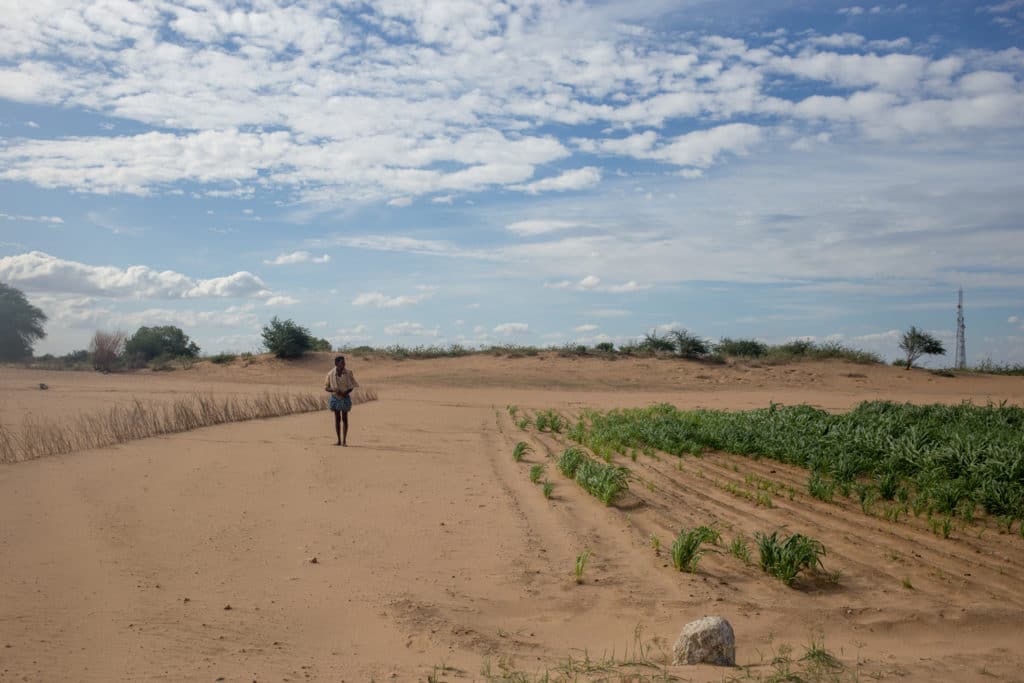
Farmer Pujari Linganna in Dargah Honnur village in the Anantapur district of Andhra Pradesh surveys his emerging bajra (pearl millet) crop, of which he is trying to grow a hybrid variety in a patch of land that is seeing swift desertification. People’s Archive of Rural India / Rahul M.
When Himalayan black bears emerge from hibernation a month too early and raid villages because Nature’s ‘welcome back’ meal of fruits, roots, and nuts hasn’t cooked yet, you know something is changing. When a patch of land deep in the southern peninsular region gets so dried out that the film industry uses it to shoot desert fight scenes, you know it’s not Art imitating Life and Nature. When the experiences of ordinary farmers, labourers, and fisherfolk give you insights on how our industrial and agro-ecological practices are linked to extreme weather episodes, you know there is one big change we need to make. We need to liberate the climate change debate from the corporate kleptocrats and their experts.
That debate is today controlled by the bureaucrats of national governments (acting as executive committees of their respective corporate worlds) and by the Big Auto Industry and fellow travellers whose captive think tanks want us to learn how to ‘fight’ climate change their way.
These major think tanks’ positions on climate change range from denial to an explanation that points to the whims of Nature—she’s done these things before; have we forgotten the Ice Age, when there was no Industry around? The role of human agency, some of them tell us, has been greatly exaggerated. And then there are those media persons, the ones who can’t tell a mangrove from a manual plough, preaching from the market-centric corporate curriculum.
Covering rural India isn’t easy, let alone covering its climate crisis. For starters, India has no official definition of ‘rural’; the Indian Census defines only ‘urban unit’ or town. And as one 2011 Census paper puts it: ‘All areas which are not categorized as Urban areas are considered as Rural Areas’. In short—anything that is not urban is rural. Then we have the extraordinary multiplicity of climate zones in India (the number of which varies based on which system of classification is used).
At the People’s Archive of Rural India (PARI), we decided that it was our role to learn, not to preach. Our understanding of good journalism is that which engages with the great processes of our time and tells its stories through the everyday lives of everyday people. We decided to try and understand the huge impacts and drivers of climate change through the voices of ordinary people and their lived experiences. We decided to attempt that from every climatic zone in the country. And each reporter in whichever zone they were in found himself or herself on a journey of discovery.
In Anantapur we found how tinkering with locally evolved, healthy, and environmentally sound farming practices for capitalist efficiency can have unbelievable consequences; how switching to corporate-owned commercial seed and capitalist farming models not only affects the economics of farming, but also undermines the role and status of women in agriculture in that region; how it affects temperatures and weather; and, finally, how it contributes at some level to changes in climate patterns.
In Kerala, we learned more in an afternoon with the women farmers of the great Kudumbashree movement than we would in a month of think tank seminars. From these women, we learned of hope and possibility, and we learned how important land use, land ownership and control, and cropping patterns are in the pursuit of sustainable agriculture. The two stories that follow hopefully communicate something of that learning.
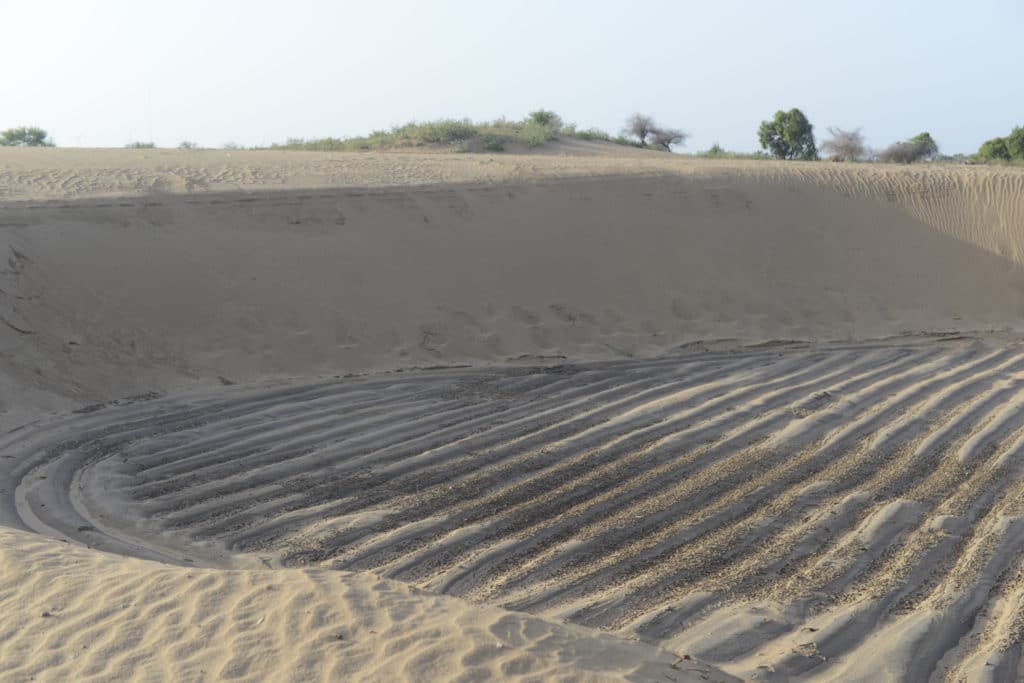
Honnureddy’s painstakingly laid-out rows of plants were covered in sand in four days. People’s Archive of Rural India / P. Sainath.
I. It’s Raining Sand in Rayalaseema
It’s a classic Indian cinema fight in the desert scene. Against the background of dunes and depressions with a tiny sprinkling of scrub vegetation, the hero rises from the burning sands of a barren wasteland to beat the bad guys to a pulp. Adding plenty of heat and dust to that already bestowed by nature, he brings the film to a happy conclusion (except for the villains). Countless Indian movies have staged those scenes in some desolate wilderness of Rajasthan. Or even in the ravines of the Chambal valley in Madhya Pradesh.
Only, this arid wilderness scene used no locations from Rajasthan or the Chambal. It was shot deep in the southern peninsula, in Andhra Pradesh’s Rayalaseema region. This specific patch of some 1,000 acres in Anantapur district—once covered by millet cultivation—has over many decades become more and more of a desert. This desertification has been driven by often paradoxical factors—and created the kind of space that filmmakers send out location scouts to look for.
In Dargah Honnur village, where the major landowners of this patch reside, it was difficult to get anyone to believe that we were not movie location scouts. ‘Which film is this for? When is it coming?’, was either an explicit question or one on their minds. With some, you could see a quick ebbing of interest when they learned that we were journalists.
The makers of the Telugu film that made the place famous—Jayam Manade Raa (Victory Is Ours)—shot its fight scenes here between 1998 and 2000. Like any diligent commercial filmmakers would, they tinkered with their ‘set’ to enhance the desert effect. ‘We had to uproot our crop (for which they compensated us)’, says Pujari Linganna (age 45), whose family owns the 34 acres where the fight was shot. ‘We also removed some vegetation and small trees so it would look more real’. Deft camerawork and the intelligent use of filters did the rest.
If the makers of Jayam Manade Raa were shooting a 20-years-after sequel today, they would have to do much less. Time, tormented nature, and relentless human intervention have created all of the desert enhancements they could ask for.
But it is a curious desert patch. There is still cultivation—because there is still groundwater very close to the surface. ‘We hit water in this patch at just 15 feet below’, says P. Honnureddy, Linganna’s son. In much of Anantapur, borewells will not find water before 500-600 feet. In parts of the district, they have breached the 1,000-foot mark. Yet here is water gushing out of a four-inch borewell as we speak. That much water, so close to the surface, in this hot and sandy patch?
‘That whole area lies in an extended riverbed’, explains Palthuru Mukanna, a farmer from a nearby village. What river? We can see nothing. ‘They built a dam [around five] decades ago, some 25-30 kilometres from D. Honnur, on the Vedavathi river that ran through here. Our stretch of Vedavathi (a tributary of the Tungabhadra—also called the Aghari) simply dried up’.
‘That is indeed what happened’, says Malla Reddy of the Ecology Centre (of Anantapur’s Rural Development Trust)—few know this region as well as he does. ‘And the river may be dead but, over centuries, it helped create an underground reservoir of water that is now being relentlessly mined and extracted at a rate which signals a coming disaster’.
That disaster will not be long in coming. ‘There was hardly a single bore 20 years ago’, says V. L. Himachal (age 46), a farmer with 12.5 acres in the desertified area. ‘It was all rainfed agriculture. Now there are between 300-400 borewells in about 1,000 acres. And we strike water by 30-35 feet, sometimes higher’. That’s one borewell to every three acres, or less.
That is high density—even for Anantapur, which, as Malla Reddy points out, ‘has close to 270,000 borewells, though the carrying capacity of the district is 70,000. And almost half of this huge number are dry this year’.
So, what are the borewells in these badlands for? What is being cultivated? What sticks out in the patch we are exploring is not even the district’s all-pervasive groundnut crop, but bajra (millet). That millet is cultivated here for seed multiplication. Not for consumption or the market, but for seed companies who have contracted the farmers for this job. You can see male and female plants laid out neatly in adjacent rows. The companies are creating a hybrid from two different strains of bajra. This operation will take a great deal of water. What is left of the plant after seed extraction will at best serve as fodder.
‘We get Rs. 3,800 per quintal for this seed replication work’, says Pujari Linganna. That seems low, given the labour and care involved—and the fact that the companies will sell those seeds to the same class of farmers at very high prices. Another cultivator on this patch, Y. S. Shantamma, says her family gets Rs. 3,700 per quintal.
Shantamma and her daughter Vandakshi say that the problem of cultivating here is not water. ‘We even get water in the village though we have no piped connection at home’. Their headache is the sand, which—in addition to the huge volume that already exists—can accumulate very rapidly. Trudging across even short distances on sand several feet deep can be tiring.
‘It can simply destroy the work you’ve put in’, say the mother and daughter. P. Honnureddy agrees, showing us the stretch beneath a sand dune where he had painstakingly laid out rows of plants—not four days ago. Now they are just furrows covered in sand. This place, part of an increasingly arid zone which sees strong winds hit the village, has sandstorms.
‘Three months in the year it’s raining sand in this village’, says M. Basha, another desert cultivator. ‘It comes into our homes; it gets into our food’. The winds bring sand flying into even those homes that are not so close to the dunes. Netting or extra doors don’t always work. ‘Isaka varsham [sand rain] is part of our lives now, we just live with it’.
The sands are not strangers to the residents of D. Honnur village. ‘But yes, their intensity has risen’, says Himachal. A lot of the shrubbery and small trees that formerly served as wind barriers have gone. Himachal speaks knowledgably of the impact of globalisation and market economics on his village. ‘Now we calculate everything in cash. The shrubs, trees, and vegetation went because people wanted to use every inch of land for commercial cultivation’. Farmer M. Tippaiah (age 55) adds that ‘if sands fall when seeds are in germination or sprouting, the damage is total’. Yields are lower—despite their access to water. ‘We get three quintals of groundnut an acre, at best four’, says farmer K. C. Honnur Swamy (age 32), compared to the district’s average yield of around five quintals per acre.
The farmers see no value in natural wind barriers. ‘They will only go for trees that have commercial value’, says Himachal. But, these commercial trees—unsuited to these conditions—may not grow here at all. ‘And anyway, the authorities keep saying they will help with trees, but that hasn’t happened’.
‘A few years ago’, says Palthuru Mukanna, ‘several government officials drove out into the dunes area for an inspection’. The desert safari ended badly and their SUV, mired in the sands, had to be towed out by the villagers with a tractor. ‘We haven’t seen any more of them since’, Mukanna adds. There are also periods, says farmer Mokha Rakesh, ‘when the bus cannot go to that side of the village at all’.
The loss of shrub and forest is a problem across the entire Rayalaseema region. In the Anantapur district alone, 11 per cent of the area is classified as ‘forest’. Actual forest cover has dwindled to less than 2 per cent. That has had the inevitable impact on soil, air, water, and temperatures. The only large forest you see in Anantapur is the jungle of windmills—thousands of them—dotting the landscape everywhere, even bordering the mini desert. These have come up on land purchased or leased long-term by windmill companies.
Back in D. Honnur, a group of desert patch cultivators assures us that things were always this way. They then go on to present compelling evidence to the contrary. The sands have always been there, yes. But their force, producing sandstorms, has grown. There was more shrub and cover earlier. Now, there is very little. They have always had water, yes, but we later learned of the death of their river—that, while there were very few borewells two decades ago, there are hundreds now. Every one of them recalls a spike in the number of extreme weather episodes these past two decades.
Rainfall patterns have also changed. ‘In terms of when we need the rains, I’d say there are 60 per cent less’, says Himachal. ‘There’s less rains around Ugadi [Telugu New Year’s Day, usually in April] these past few years’. Anantapur is touched by both southwest and northeast monsoons but derives the full benefit of neither.
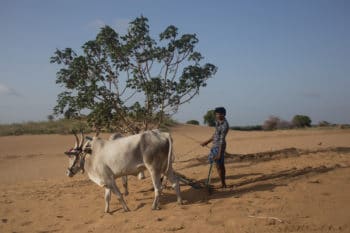
Linganna’s grandson Honnur Swamy is a desert cultivator now. People’s Archive of Rural India / Rahul M.
Even in years when the district receives its annual average rainfall of 535 mm, the timing, spread, and dispersal have been terribly erratic. In some years, the rains have moved from crop to non-crop seasons. Sometimes, there has been a huge downpour in the first 24-48 hours and great dry spells afterwards. Last year, some mandals [districts] saw dry spells of almost 75 days during the crop season (June to October). With 75 per cent of Anantapur’s population in rural areas and 80 per cent of all workers engaged in agriculture (either as farmers or labourers), this proves devastating.
‘There have been just two really “normal” years in Anantapur in each of the last two decades’, says Malla Reddy of the Ecology Centre. ‘In every one of the remaining 16 years, two-thirds to three-fourths of the district has been declared as drought-affected. In the 20 years prior to that period, it was three droughts every decade. The changes that began in the late 1980s have hastened every year’.
A district once home to a multitude of millets has switched increasingly to commercial crops like groundnut. The district saw, correspondingly, a massive sinking of borewells. According to a report of the National Rainfed Area Authority, there are now ‘pockets where groundwater exploitation has exceeded 100 per cent’.
‘Forty years ago, we had a clear pattern—three droughts in 10 years—and farmers knew what to plant. There were between 9 and 12 diverse crops and a stable cultivation cycle’, says C.K. ‘Bablu’ Ganguly. He leads the Timbaktu Collective, an NGO which for three decades has focused on the economic betterment of the rural poor in this region. His own four-decade engagement here has given him tremendous insight into the region’s farming.
‘Groundnut [now covering 69 per cent of cultivated area in Anantapur] did to us what it did to the Sahel in Africa. The monocropping we descended into didn’t just alter the water situation. Groundnut can’t take shade, so people remove trees. Anantapur’s soil was destroyed. Millets were decimated. The moisture is gone, making a return to rainfed agriculture difficult’. Crop changes also undermined the role of women in farming. Traditionally, they were the custodians of the seeds of diverse rainfed crops that once grew here. Once farmers began to buy seeds on the market for the cash crop hybrids that took over Anantapur (such as groundnut), the role of women was reduced largely to that of labourers. Also lost, over two generations, were the skills of many farmers in the complex art of growing multiple, varied crops on the same fields.
Fodder crops now account for less than 3 per cent of cultivated area. ‘Anantapur once had one of the highest numbers of small ruminants in the country’, Ganguly says. ‘Small ruminants are the best asset—mobile property—of ancient communities of traditional herders like the Kurubas. The traditional cycle where the herders’ flocks provided post-harvest manure to the farmers’ fields in the form of dung and urine—that’s disrupted by changing crop patterns and chemical agriculture. Planning for this region has proved hostile to the marginalised’.
In D. Honnur, Himachal recognises the shrinking agricultural biodiversity around him and its consequences. ‘Once, in this very village, we had bajra, cowpea, pigeon pea, ragi, foxtail millet, green gram, field beans…’ he rattles off a list. ‘Much easier to cultivate, but rainfed agriculture doesn’t bring us cash’. Groundnut did, for a while.
The crop cycle of groundnuts is around 110 days. Of those 110 days, groundnuts only cover the soil for 60-70 days, dramatically decreasing the protection of the soil from erosion. In the era when nine different millets and pulses were grown, these crops offered the topsoil a protective shade cover from June to February each year, with one or the other crop always on the ground. This difference in soil coverage has led to devastating erosion since the transition to the monocultivation of groundnuts.
Back in D. Honnur, Himachal is reflective. He knows that borewells and cash crops brought great benefits to the farmers. He also sees the declining trend in these benefits—and the growing out-migrations as livelihoods shrink. ‘There are always over 200 families seeking work outside’, says Himachal. That’s a sixth of the 1,227 households the 2011 Census records for this village in Anantapur’s Bommanahal mandal. ‘Around 70-80 per cent of all households are in debt’, he adds. Farm distress has been high across Anantapur for two decades—and it is the hardest-hit district by farmer suicides in Andhra Pradesh.
‘The boom time of borewells is gone’, says Malla Reddy. ‘So is that of cash crops and monocultures’. All three still proliferate, though, driven by that fundamental shift from production for consumption to ‘creating products for unknown markets’.
If climate change is simply about nature pressing its reset button, then what was it we saw in D. Honnur and Anantapur? Also, as the scientists tell us, climate change occurs across very vast natural regions and zones—D. Honnur and Anantapur are administrative units, mere specks, too small to qualify. Can it be that large canvas changes across much greater regions might sometimes aggravate existing freakish features of sub-regions within them?
Almost all the elements of change here resulted from human intervention: the ‘borewell epidemic’; the massive switch to commercial cropping and monocultures; the loss of biodiversity that could be Anantapur’s best defence against climate change; the ongoing exhaustion of the aquifer; the devastation of the little forest cover this semi-arid region had; the harming of the grassland ecology and a serious degradation of the soil; the industry-driven intensification of chemical agriculture; the crumbling of symbiotic relationships between farm and forest, shepherds and farmers; the loss of livelihoods; and the death of rivers. All these have clearly impacted temperatures, weather, and climate—which have in turn further aggravated these processes.
If human agency, driven by a model of economics and development gone berserk, is a major driving factor in the changes upon us, there is plenty to be learned from this region and many like it.
‘Maybe we ought to shut down the borewells and return to rainfed farming’, says Himachal. ‘But it’s too difficult’.
II. Kerala’s Women Farmers Rise Above the Flood
‘The fine dust from the drying silt and the pollution from all the muck lying on the fields is quite nasty’, says Dathan C.S. in Pattanamthitta. ‘Please wear this’, he adds, handing me a surgeon’s mask. Behind him, a woman laughs at this—one of those whose farms have been ruined by the Kerala floods. ‘He lives in Mumbai’, she scoffs, ‘what protection from pollution could he possibly need?’
The fields are a picture of devastation. What was once a fine, profit-making patch of paddy and tapioca lies buried under inches—in some places, feet—of silt from the riverbed, and effluents and pollutants brought in from upstream by the flood waters. Across many acres of farmland, that deadly mix of muck and matter has dried out and hardened in the blazing sun, covering the soil like a blanket of crude cement.
Water tables are falling, groundwater is not recharging, wells are drying out, temperatures are rising. All this and more has perversely impacted the entire equation between surface and groundwater. River ecologies have been dramatically transformed. With the loss of their sand beds and silt, many rivers and streams are now unable to retain water. And so, oddly enough, the next calamity Kerala faces could be a drought. Restoring cultivation in this situation could dishearten the most determined.
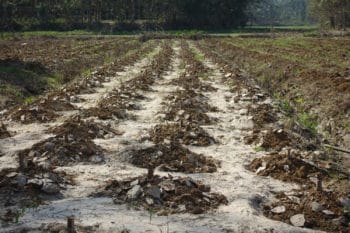
The women are working on cleaning out the silt, but stretches like this one in the middle of fields remain hardened and difficult to clear. People’s Archive of Rural India / P. Sainath.
But not the women farmers of Kudumbashree.
There are well over a quarter of a million of them, one part of the massive women’s community network across Kerala. Kudumbashree (literally ‘prosperity of the family’) has nearly 4.5 million members. Membership is open to all adult women but restricted to one woman per household. This means that close to 60 per cent of Kerala’s 77 lakh households have a member who is part of this network. At the heart of Kudumbashree are those 3.2 lakh women farmers who have banded themselves into sangha krishis—units that practice group or collective farming.
There are 70,000 sangha krishis, each with five members on average. Every group works on leased land, usually less than two and a half acres, sometimes as little as a single acre. Most practice organic or low-input sustainable agriculture. In a country where farming is in shambles, these women have run their tiny leased land farms for profit based on a principle of ‘food justice’. As one example of this, surplus produce can be sold on the market only after all the families of the group farm have satisfied their own needs.
Their success and efficiency mean that—unlike elsewhere in the country—banks run after the farmers, not the other way around. In the Pattanamthitta district, where we are now, the repayment rate is 98.5 per cent. In some villages, Kudumbashree is the largest depositor in the local bank.
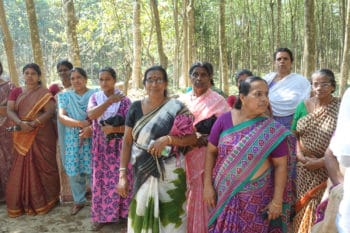
Women farmers of a Kudumbashree group farming unit in Pattanamthitta, Kerala. Their entire crop was destroyed by astonishing levels of rainfall and flooding, but the women refuse to be disheartened, vowing to return to cultivation on their muck-covered fields within months. People’s Archive of Rural India / P. Sainath.
But now the sangha krishis lie devastated by the floods—they may have lost Rs. 400 crores across the state. Of that, the crops destroyed account for Rs. 200 crores alone. The rest is from soil fertility loss, land reclamation costs, accrued loss on borrowings, and collateral damage. The overall figure could still rise higher as other costs emerge.
The 71 group farms working on 92 acres in the nine panchayats [village councils] of Ranni block had taken Rs. 72 lakhs in bank loans this year. ‘And it’s all gone with this flood’, says Omana Rajan, a leading Kudumbashree activist and group farmer. Her own sangha krishi, ‘Manna’ (‘Divine Gift’), had made Rs. 2 lakhs in profits from banana cultivation alone last year. Each of the group’s five members made a profit of around Rs. 50,000 last year. ‘We get premium prices as we practice organic farming. But this year we missed out on the best seasonal prices—the Onam festival period. Everything was destroyed. But we will rebuild’.
We are witnessing that destruction in Ranni Angadi village. Less than 10 of the 71 sangha krishis in this panchayat have any insurance—getting insurance for leased land is not easy. Dathan, a Master of Science (M.Sc.) in agriculture employed with the department of soil conservation in the Kerala government, surveys the damage with the eye of the expert. He works on deputation with Kudumbashree activists such as Bincy Bijoy, the woman mocking the idea of Mumbaikars needing protection from pollution. Her lens is that of the farming practitioner.
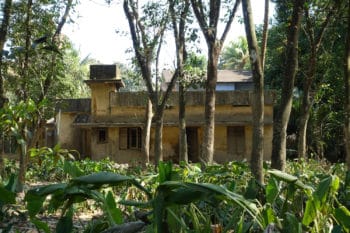
The flood water rose to almost the roof of this house in Ranni Angadi. People’s Archive of Rural India / P. Sainath.
Whichever way you look, the damage is daunting. But the courage and spirit of these women seem to rise in inverse proportion to the devastation they have suffered as a result of the August floods—Kerala’s worst in a century. At our first meeting in the Ranni Angadi panchayat office, they bustled in laughing and cheerful. Panchayat president Babu Pullat even joked about that: ‘We are supposed to be in the midst of a great tragedy that this man has come to write about’, he told them, ‘and here you all are laughing. What will he think? Shouldn’t we be serious?’ More laughter greeted this admonition. Quite a few of the women insisted on speaking to me in Hindi, even though both they and I speak some Tamil. I was from Mumbai and so Hindi it had to be.
It costs well over Rs. 3 lakhs to grow an acre of banana, explains Bijoy. ‘Each of the 1,000 plants we can put on an acre costs Rs. 300. We also have to spend something on pesticide—organic pesticide. And there are high labour costs’. But they can get yields of 10-12 tons per acre and sell their bananas for up to Rs. 60 a kilogram so that they can make Rs. 1.5 to Rs. 2 lakh profit, as many of the groups here did, last year. ‘Besides’, says Shiny Joseph of the ‘Sangamam’ (‘Confluence’) sangha krishi, ‘we can get premium prices at Onam time [the harvest festival season] of up to Rs. 80-85 a kilogram’.
Last year, each of the six members of Sangamam made a profit of Rs. 50,000. ‘This year we lost everything. All three acres were finished. It could cost Rs. 1 lakh to clear the tons and layers of sediment and muck on each acre’, says Joseph. ‘The canals have to be cleared up, too. It could take three months, but we will try to do it sooner. However, everything is drying up. And now we’re facing a drought’.
Woman farmer after woman farmer told us that they had no doubts they could rebuild—and soon. It’s not as if they don’t sense how bad things are, but their determination outstrips the devastation. ‘Ours is a collective strength. We draw courage and willpower from our solidarity. Kudumbashree is all about solidarity’. That is a statement I have heard them repeat over the years. Now in the shattering aftermath of the Kerala floods, they are living up to that claim.
Across the state, sangha krishi farmers who have lost almost everything still pitched in with some contributions to help the larger Kudumbashree network raise Rs. 7 crores for the Chief Minister’s Relief Fund. September 11 brought another poignant moment. That day, in New Delhi, Kudumbashree was awarded the National Rural Livelihoods Mission (NRLM) prize for ‘Outstanding Performance in Farm Livelihoods’—the first time the NRLM has given out such an award.
Kudumbashree could well be the greatest gender justice and poverty reduction programme in the world. Set up as part of a government initiative in 1998 by the Left Democratic Front, the women prize the independence and autonomy they have collectively built since then: ‘We work with governments, not for governments’, is a kind of motto. For all their courage and independence, today they need the help of the banks and other institutions—and the solidarity of the rest of us. There is no parallel in this country to this noble farming endeavour spearheaded by poor women. Surely not in such a scope, size, or level of achievement.
As we leave to meet with other sangha krishis, one of the women comes up to say: ‘I will be back. We’ve taken a bad hit, but we’ll be back. We will start re-cultivating in a month, you’ll see’.

